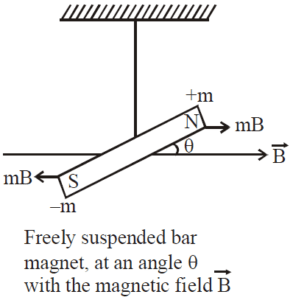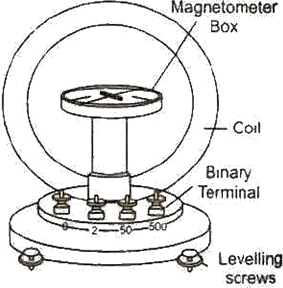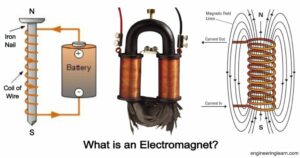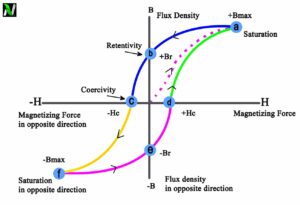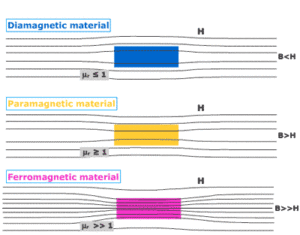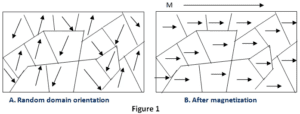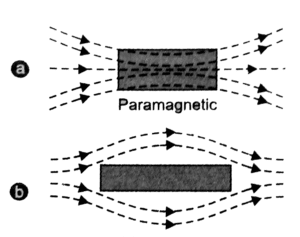There are two main types of magnets, i.e., permanent magnets, and electromagnets. A permanent magnet is called a permanent magnet because it has permanent magnetism. It generates its own persistent magnetic field from the internal structure of the materials itself, unlike an electromagnet which consists of a coil of wire wrapped around an iron core and requires an electric current to generate a magnetic field.
The magnetism generated by an electromagnet is fully controlled, it can be turned off, and on by flipping a switch up and down because magnetism by an electromagnet depends on a constant flow of electric current. In addition to the permanent magnets and electromagnets, there are other types of magnets called temporary magnets.
Permanent (hard) and temporary (soft) magnets are both ferromagnetic, but only temporary magnets exhibit remarkable magnetic properties when affected by a permanent magnet and tend not to remain magnetized. Magnetically soft materials such as steel show magnetism when it is in contact with a magnet, but this ceases when the magnet is removed.
In this article, we will learn about permanent magnets – their definition, types, properties, and uses, so let’s get started…
What is permanent magnet?
Definition: A permanent magnet is a magnet that generates its own persistent magnetic field by the internal structure of the material itself. They have the property to retain their magnetism even after the external magnetizing field is removed. A permanent magnet is made up of hard ferromagnetic material which has high retentivity and coercivity.

Read Also
How a permanent magnet is made?
When a ferromagnetic material is heated to very high temperatures while being exposed to a strong external magnetizing field. This causes the individual magnetic domains within the material to align with the direction of the external magnetic field until the point where all domains are aligned and the material reaches its magnetic saturation point.
When the material attends its magnetic saturation point, then the material is cooled rapidly so that the aligned magnetic domains are locked at their places. This alignment of the domain makes the magnet anisotropic. After this, whether the external magnetic field is removed, hard magnetic materials will keep most of their domains aligned and creates a strong permanent magnet.
Working of a permanent magnet
The working of a permanent magnet is linked to its atomic structure. A permanent magnet is a hard ferromagnet. All ferromagnetic materials produce a natural, albeit weak, magnetic field created by the electrons surrounding the nuclei of their atoms, and have a tendency to move from a weak part of the field to a strong part of the magnetic field.
All ferromagnetic materials have tiny magnets called domains. When exposed to the external magnetizing field, these groups of atoms orient in the same direction, and exhibit strong magnetism in the same direction as that of the applied magnetic field., and hence, they are strongly attracted towards the magnets.

As with permanent magnets, each domain has its own north and south poles. When a ferromagnetic material is in an unmagnetized state, its all magnetic domains point in random directions and their magnetic fields cancel each other out.
Types of permanent magnet
Permanent magnets are of several types. Each magnet is being manufactured differently from different materials with different properties. Some types of permanent magnets are given below:
- Ceramic
- Alnico
- Samarium Cobalt
- Neodymium Iron Boron
- Injection Molded
- Flexible
Ceramic
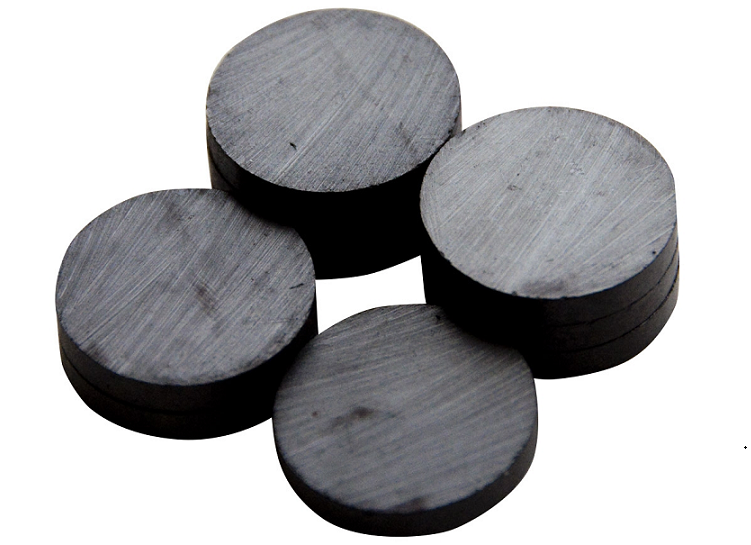
Ceramic magnets, also known as ferrite, are made of a compound of iron oxide and barium or strontium carbonate. These materials are readily available and at a lower cost than other types of materials used in permanent magnets, making them desirable due to their lower cost. Some uses of ceramic magnets are:
- Lifting Machinery
- Home Decor
- Whiteboards
- Motors & Generators
- School Projects
Alnico

Alnico magnets are made from a compound of aluminum, nickel, and cobalt. Small amounts of other elements are also added to it to improve the properties of the magnet. Alnico magnets have good temperature stability, good resistance to demagnetization due to shock but get demagnetized easily. Some uses of Alnico magnets are:
- Meters & Instruments
- Harsh Environment Equipment
- High Temperature Handling Equipment
- Heat Treatment Jigs
- Medical Devices
- Industrial Machinery
- Microphones
Samarium Cobalt

Samarium Cobalt is a kind of rare earth magnetic material that is highly resistant to oxidation. Unlike Alnico or ceramic materials, It has high magnetic strength and temperature resistance. These magnets show the best characteristics when it’s the matter temperature resistance of all rare earth magnets and can withstand up to 300°C. Sintered samarium-cobalt magnets are brittle and prone to chipping and cracking and can break when exposed to thermal shock. Some uses of samarium cobalt magnets are:
- Actuators
- Generators
- Turbo Machinery
- Electric Motors
- Magnetic Separation Devices
- Traveling Wave Tubes
- Magnetic Couplings
Neodymium Iron Boron

Neodymium Iron Boron (NdFeB) is another type of rare earth magnetic material. This material has similar properties to samarium cobalt except that it is more easily oxidized and generally does not have the same temperature resistance. Some uses of Neodymium Iron Boron (NdFeB) magnets are:
- Sensors
- Reed switches
- Hard Disc Drives
- Audio Equipment
- Acoustic Pick-Ups
- Headphones & Loudspeakers
- MRI Scanners
Read Also
Injection Molded
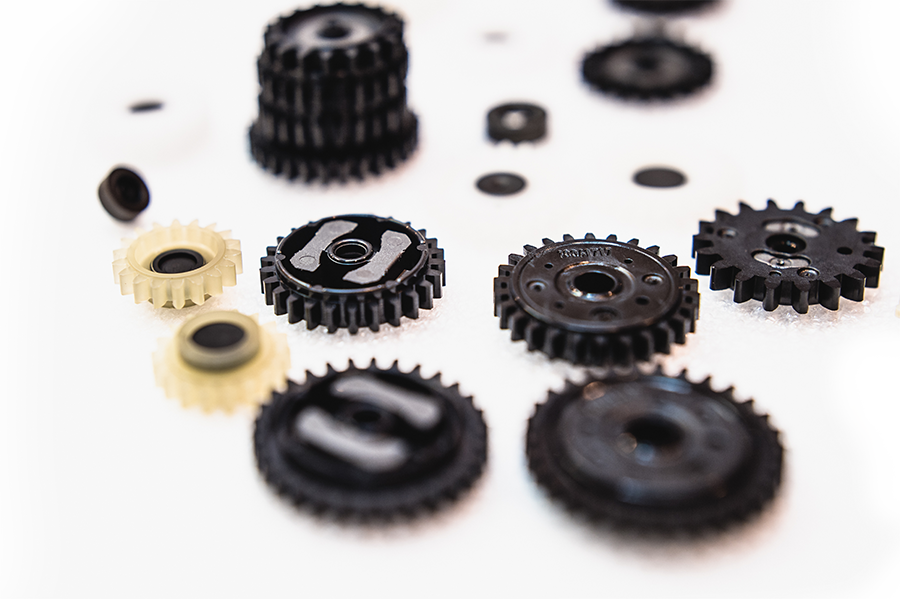
Injection moldable magnets are a composite of resin and magnetic powders of various substances permitting components to be made in an injection molding method. Energy products are established upon the magnetic powders utilized in fabrication. The molding method permits the manufacturer for creating extra complicated shapes.
Flexible

Flexible magnets are very much like injection-molded magnets however are produced in flat strips and sheets. These magnets are decreased in magnetic energy and really bendy relying on the substances that changed into used withinside the compound with the magnetic powders. Vinyl is frequently used on this kind of magnet as a binder. Some uses of flexible magnets are:
- Trade Show Displays
- Name Badge Holders
- Paint Masking Applications
- Large Format Graphics
- Commercial Signage
Properties of permanent magnet
Some properties of the permanent magnet are given below:
- High retentivity
- High coercivity
- Natural permanent magnet has inbuilt magnetic property
- Strength depends upon the nature of the material that is used in its formation
- Once magnetic properties are lost, it becomes useless
- It doesn’t require a continuous supply of electricity to maintain its magnetic field as in electromagnets.
- The poles of this kind of magnet cannot be changed.
- It doesn’t depend on external factors for its magnetic field.
- Retains its ferromagnetic property for a long period of time at room temperature.
Uses of permanent magnets
Uses of permanent magnets are given below:
- Sensors
- Motors and generators
- Television
- Loudspeaker and headphone
- Automobiles
- Toys
- Hard drives
- medical devices
- security system
Read Also
Stay tuned with Laws Of Nature for more useful and interesting content.

